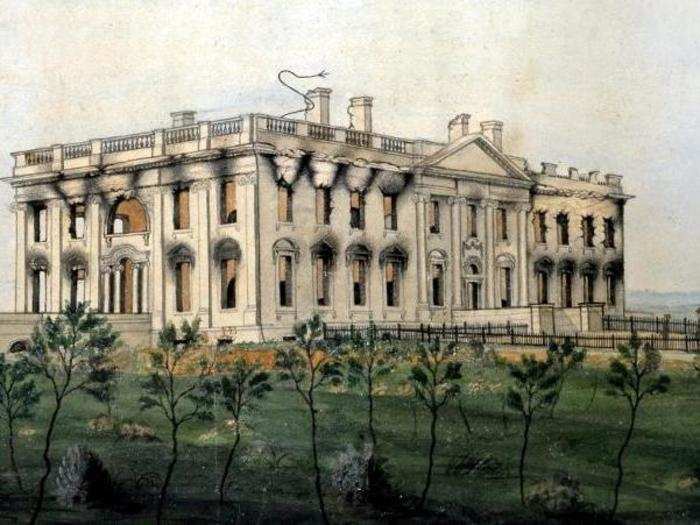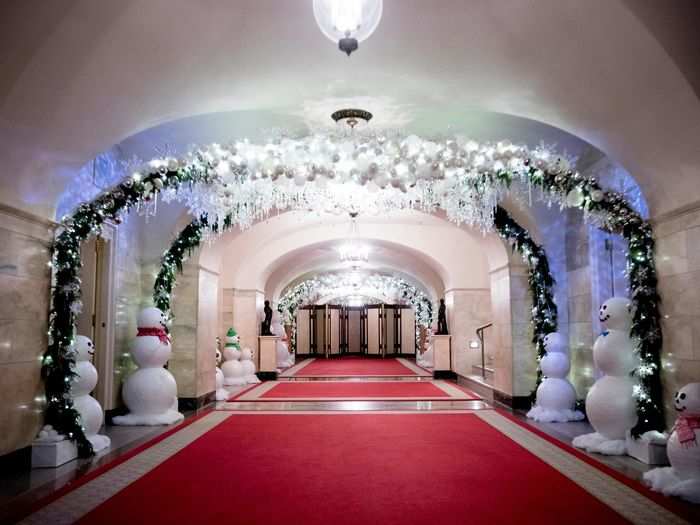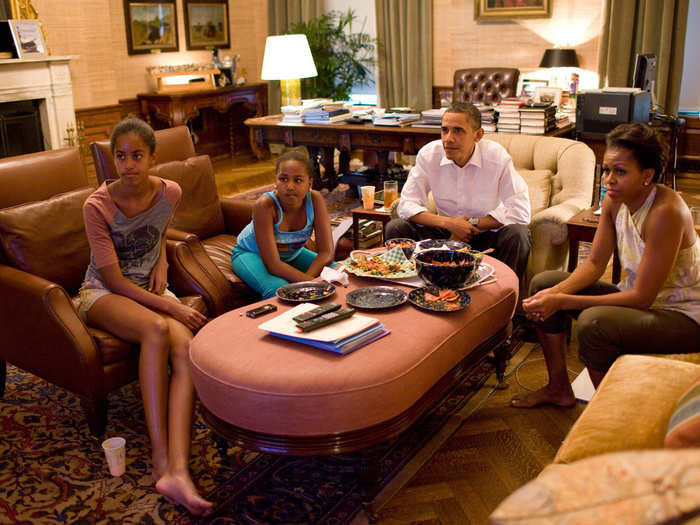- Home
- slideshows
- miscellaneous
- Trump once reportedly complained the White House is a 'dump.' Photos show how surprisingly small it is.
Trump once reportedly complained the White House is a 'dump.' Photos show how surprisingly small it is.
The White House is considerably larger in reputation than physical space when compared to other major landmarks across the US.

An 18-acre enclosed area keeps the mansion at a distance from the public on the street in the heart of Washington, DC.

From the street, it looks far away, but looms large.

The mansion's iconic features are obvious symbols that the mansion has been a center of power for more than 200 years, but they might be less grand than visitors expect.
The mansion itself covers 55,000 square feet, or around 30% of the area enclosed by the fence, and is 168 feet long from east to west — about three-quarters of the wingspan of a 747 aircraft.

Sources: White House Historical Association, Boeing
Inside and out, the White House serves as an important platform for the president to meet with the press, public, and international rulers. An estimated 90 people work on building staff to keep it in tip-top shape, and a few hundred administration staffers work in the offices of the West Wing.

Though the grounds are maintained with extensive regular landscaping and painting, only a few renovations have added space to the mansion.

The British burned down the original building during the War of 1812, so the White House as we know it today was constructed after that.

The West and East wings were added in 1902 and 1942, respectively, and a four-year renovation completed in 1952 installed a steel frame to fortify the building.

Source: White House
The building has three wings connected by two colonnades. The West Wing, where the Oval Office and the president's staff work, has three floors. The East Wing, where the first lady and her staff work, has two floors. The residence, located in the middle, has two floors of basements, a ground floor where building staff work, the state floor where official events take place, then two floors where the first family lives.

Source: The White House Museum
In the residence, the mansion's state floor contains several rooms that serve as the main reception areas for the first couple to meet with official visitors and hold events.

Its style has changed with each incoming president, but it was First Lady Jacqueline Kennedy who famously filled the mansion with historic American art and furniture, transforming the mansion's interior into a gorgeous and meaningful spectacle.

Sources: Architectural Digest
The classic touches added by the former first lady are still in the White House's main rooms today in the paintings and colored silk that cover the walls in reception areas like the Green Room.

The rooms provide a picturesque and intimate setting for the president and first lady to receive their diplomatic guests.

The main drawing rooms are among the most visible areas of the mansion. They connect to the main hallway, Cross Hall.

The hall connects all the main parlors, including the Blue and Red rooms, providing a prime space for festive seasonal decorations.

The main corridor only measures a little less than 18 feet by 80 feet, about 20 feet longer than a bowling lane.

Source: White House Museum, US Bowling
The East Room, approximately 80 feet by 37 feet, is often used for formal ceremonies and press availability.

Source: White House Museum
The State Dining Room is home to many of the official functions, and was expanded to approximately 49 feet by 36 feet, which can accommodate 140 guests. It's where the most formal meals are held, including state dinners.

Source: White House Museum
The first family's residence is a floor away from the mansion's main reception rooms, accessed by a private staircase.

The first family's residence on the second and third floors are some of the most private and historically significant rooms in the mansion.

Counting all six levels, the residence has 132 rooms, 35 bathrooms, 412 doors, 147 windows, 28 fireplaces, eight staircases, and three elevators.
The Yellow Oval Room is one of the largest rooms of the residence floor and has provided an intimate space for the first couple to host guests who have the honor of seeing the private level.

There are a couple smaller sitting rooms that may feel more intimate for the first family, including the Treaty Room, seen here for a World Cup soccer game in 2011.

The Lincoln Bedroom, named for the former president who used the room as an office and is rumored to still haunt the space, serves as a guest room.

The iconic room's last major refurbishment was by former first lady Laura Bush in 2007, but all first families are invited to put their personal touches on the residence's decorations.
The West Wing is where private rooms are officially designated and designed for the administration's work.

Parts of the well-known West Wing resemble a standard office building, complete with photos of the present's inauguration celebrations.

The Cabinet Room allows for 22 people, including administration officials and relevant outside agents, to take a seat at the large conference table for meetings on specific issue areas.

The West Wing's "Situation Room" is a major center for the administration's work, as it's actually a series of conference rooms that spans 5,000 square feet to host meetings with the president and top defense officials.

Source: White House Museum
In comparison to the glitzy Manhattan penthouse Trump lived in before taking office, the White House offers a more vintage and compact feel.

Source: Politico
Though it's smaller than people might expect, it's still the 34th largest house in the US, and it's filled with more history than any of them.

Popular Right Now
Popular Keywords
Advertisement
